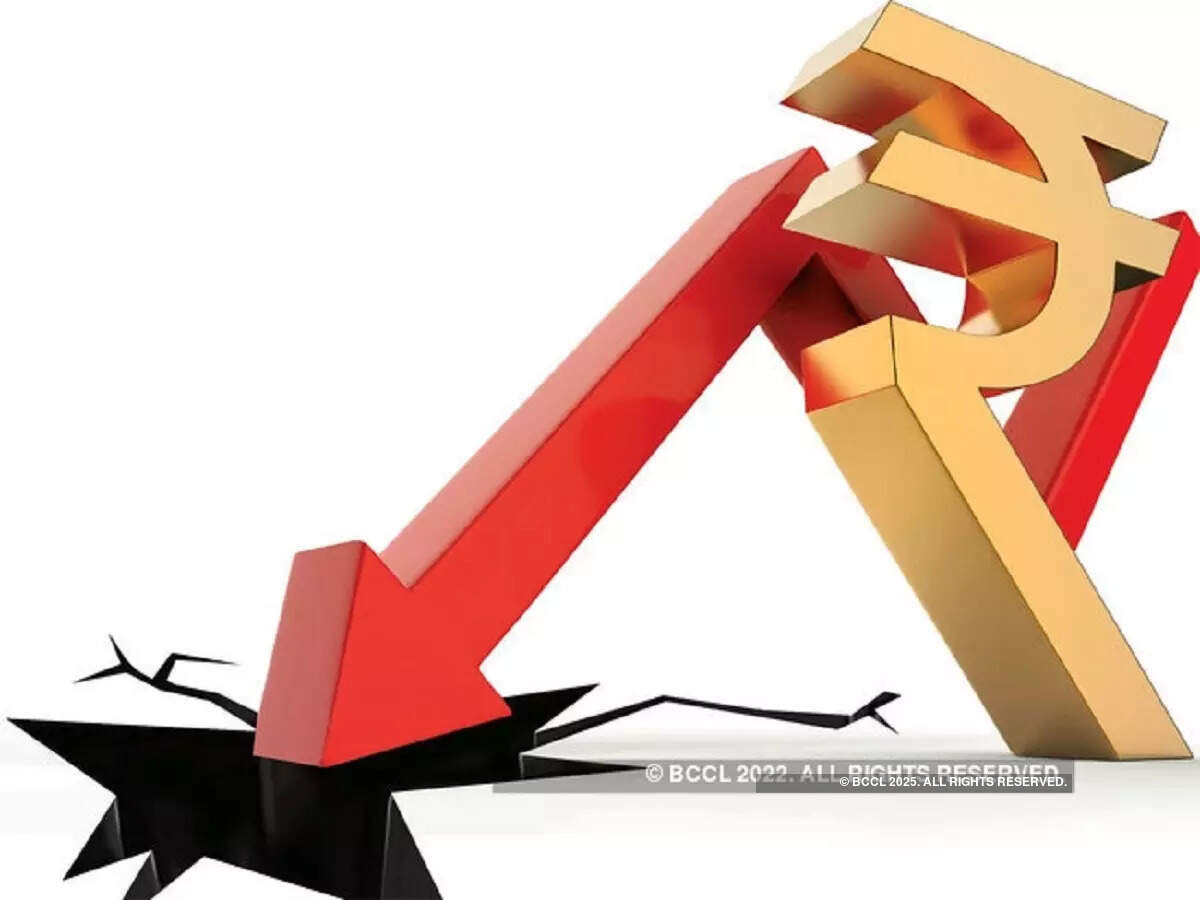
The Rupee breaching the psychological mark of 80 on Tuesday for the first time ever has set off alarms if this slump signals a further deterioration of the Indian economy.
While a weaker Rupee tends to do more harm than good, some economists have opined that it does not mean the Indian economy is in dire straits.
“It is largely correct that the Rupee is weakening mainly because the dollar is strengthening but that does not make life any easier for us, unfortunately. So it is not easy to say oh! well just because the rupee has touched Rs 80 to a dollar that means Indian fundamentals are very weak,” Mythili Bhusnurmath, Consulting Editor, ET Now said.
This slump in Rupee, and other Asian currencies, is largely due to the underlying strength of the US Dollar and the foreign portfolio investments (FPI) equity outflows.
The dollar has gained more than 10% this year and is now at a 20-year high. The strength of the dollar is determined by indexing it against a basket of currencies of major trading partners like Japan and the eurozone.
“There has been a strong exodus of FPI investors in recent months largely owing to global inflationary pressures, policy rate hikes by major central banks and heightened geopolitical tensions on account of world developments such as Russia-Ukraine War,” the Reserve Bank of India (RBI) said in its June bulletin.
The net outflow by FPIs from equities this year so far has reached a record high of Rs 2.25 lakh crore. Before this, they withdrew Rs 52,987 crore in the entire 2008, data showed.
“As capital flows return, depreciation pressure on the rupee that is being experienced now will ease and this, in turn, will curb imported inflation,” RBI added.
How does it affect you?
Nomura expects the Rupee to fall to Rs 82 in the third quarter of this calendar year.
In general, net exporters will gain as they will receive more rupees for their dollars while net importers will need to pay more to buy dollars for imports.
The primary and immediate impact of a depreciating rupee is on the importers who will have to shell out more for the same quantity and price. However, it is a boon for the exporters as they receive more rupees in exchange for dollars.
Those with large foreign loans will also see rupee interest costs rise.
Here is how a depreciating rupee is likely to impact spending:
- Imports: Importers need to buy US dollars to pay for imported items. With the dip in the rupee, importing items will get more expensive. Not just oil but electronic items, such as mobile phones, some cars and appliances, are likely to get expensive.
- Foreign education: The rupee losing value against the US dollar would mean foreign education just became more expensive. Not just having to shell out more rupees for every dollar that the foreign institutions charge as fees, education loans too have become costlier following the interest rate hikes by the RBI.
- Foreign travel: With the COVID-19 cases declining, there has been revenge travel for work and leisure. But, these have now just become more expensive.
- Remittances: However, non-resident Indians (NRIs) who send money back home will end up sending more in the rupee value.
RBI measures
The RBI regularly monitors the foreign exchange market and intervenes in situations of excess volatility. It has raised interest rates in recent months that increase the attractiveness of holding Indian rupees for residents and non-residents.
Earlier this month, the RBI raised the overseas borrowing limits for companies and liberalised norms for foreign investments in government bonds as it announced a slew of measures to boost foreign exchange inflows.
The RBI increased the ECB limit under the automatic route from USD 750 million or its equivalent per financial year to USD 1.5 billion, and eased norms for foreign portfolio investments in the debt market.
Sanjeev Sanyal of the Economic Advisory Council notes that while the Rupee has depreciated overall, it is appreciating against every other currency.
“The rupee is obviously depreciating against the US dollar but do note that it is appreciating against pretty much every other currency whether it is the Euro, the British Pound, the Yen and so on and I think on a weighted basis if anything it is appreciating,” he said.
“We have plenty of reserves which they are using to smoothen the course but it would be unwise to try and defend a level in a situation where the US dollar is clearly strengthening very rapidly,” he added.
But India’s forex reserves are depleting quickly and are currently at their lowest in 15 months. Forex reserves fell by $8.06 billion to $580.3 billion as of July 8. Currently, the reserves will cover less than 10 months of imports.
Among other things weighing on the Rupee, it is a bigger import bill led by higher commodity prices which are also boosting demand for dollars.